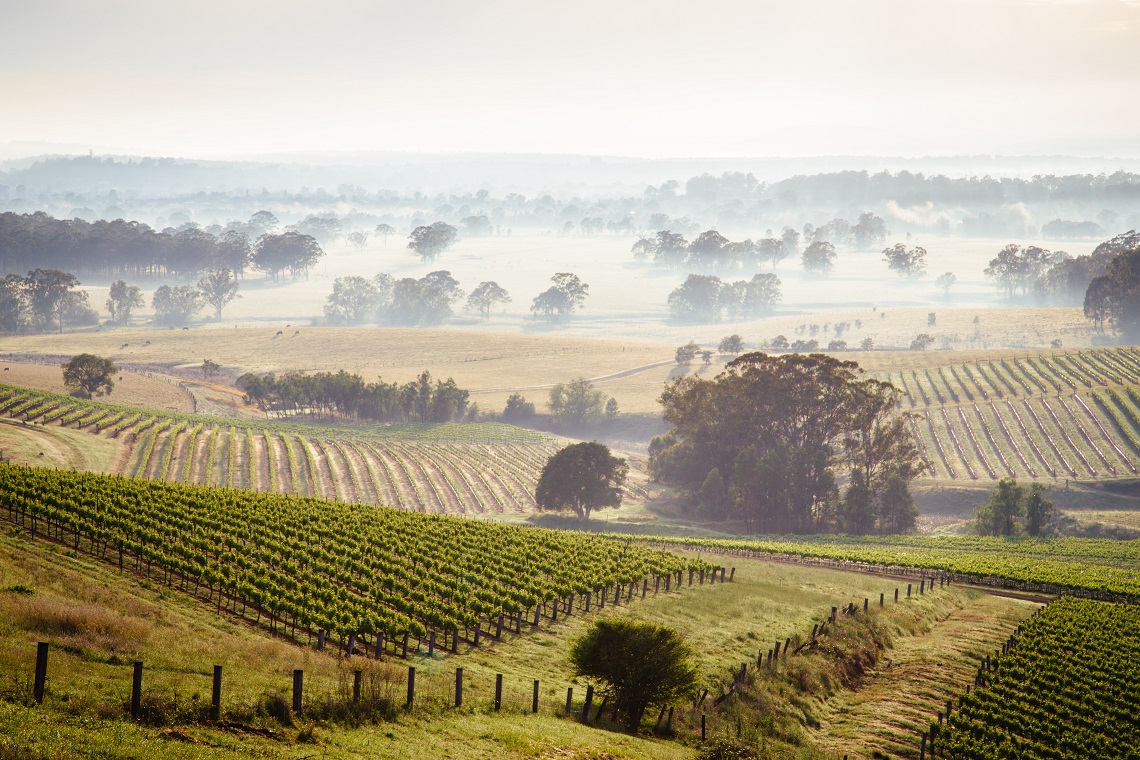The Hunter Valley’s winemakers and grape growers are facing a challenging vintage, as a result of drought and smoke from bushfires and back burning which has lingered over the region, but the message is that wines will still be made and vintage is not completely doomed.
The region has been testing its grapes for smoke taint for a number of weeks and while some fruit has been rejected, some has been cleared and will be used to make wine.
TheShout has been told that growers, winemakers and the scientists testing the grapes have found that once vines are 20-40kms away from the fire the phenolic compounds which cause smoke taint start to fall away. Those vines closer to fires and flames will find vintage more difficult.
Early indications also suggest that one of the Hunter’s key varietals, Semillon, is proving hardy and resistant when it comes to smoke taint. The testing is ongoing with grapes both being sent to labs for testing and winemakers doing their own bucket ferments to check if there is any indication of smoke.
CEO of Tulloch Wines and President of the Hunter Valley Wine Tourism Association (HVWTA), told TheShout: “In terms of the effects on the Hunter Valley region and 2020 vintage it really is still too early to tell. Smoke taint is a reasonably new and inexact body of science and as a region we are currently working through all the options and procedures at our disposal to evaluate any perceived risk.
“The Hunter Valley is very large valley and there are many factors at play including proximity to the fire, elevation, and days in smoke contact. The pleasing thing is that for most of the Hunter Valley, the fires actually haven’t been that close to vineyards.
“As a region, we are working closely with the Australian Wine Research Institute (AWRI) and last Friday we sent 110 samples from across the region to be tested for all of the free and bound compounds that could be a present in finished wine.
“We have seen many vignerons begin harvest, guided by results from these smoke tests from the AWRI and sensory evaluation of micro ferments. The Hunter Valley is Australia’s oldest and most resilient region at nearly 200 years old. We have had good years and bad years and whatever 2020 brings, we remain positive and productive in the face of the challenges from drought and fire.”
Angus Barnes, Executive Officer of New South Wales Wine, also told TheShout that winemakers and grape growers in the region are very proud of the Hunter’s reputation and will not make wines that could damage that standing.
“If the Hunter’s winemakers make a wine, it will be a good wine. The Hunter has a strong reputation to uphold and we all want to make sure we continue that.
“Through 2017, 2018 and 2019 the Hunter has had three incredible vintages. This year was already going to be challenging because of the drought and for some vineyards the smoke will mean it is more challenging, some fruit will not be used but vintage is definitely not doomed.”
While the winemakers and grape growers concentrate on ensuring they can make good wines, there is also a focus on what can be done to help the region. The Hunter is still safe to visit and people are encouraged to visit wineries and for those who can’t make the journey you can still look to buy Hunter wines and help keep winemakers in the region going.
Barnes and his colleagues are also working with State and Federal Governments on recovery packages not only for the Hunter, but for other regions as well, to help ensure winemakers and grape growers survive and also to bring tourists back to the regions once it is safe to visit.

